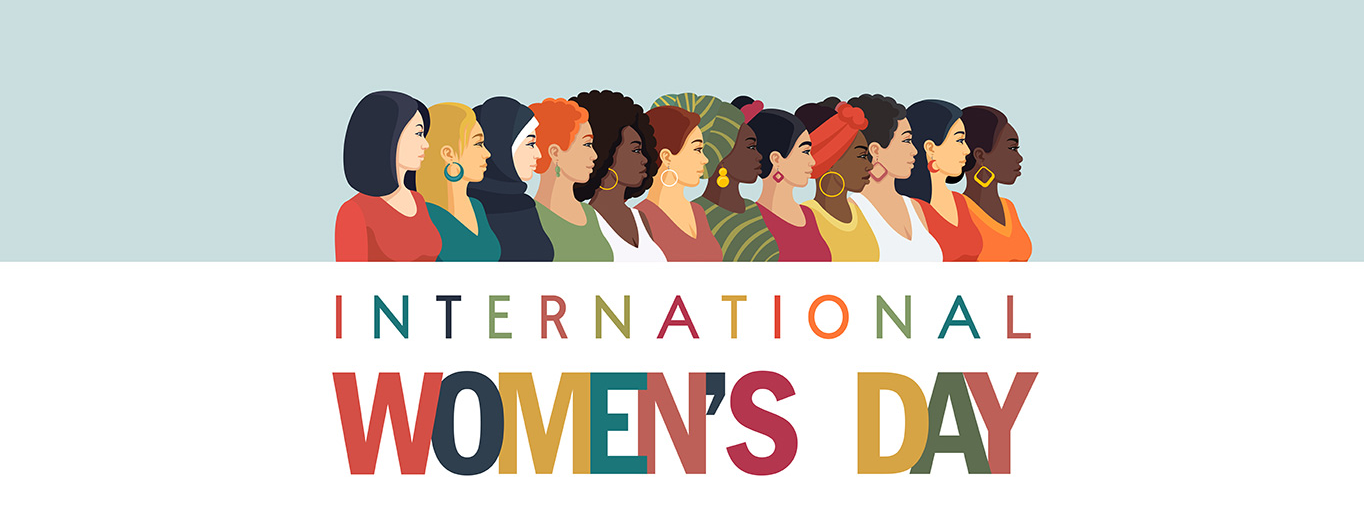
This article is part of the series — International Women's Day
At the International Conference of Working Women in Copenhagen in 1910, 100 women from across 17 countries planted the early seeds for an International Women’s Day (IWD) to celebrate women across all spheres of life—economic, social, and political. About 65 years later, the United Nations declared 8 March as the official International Women’s Day, a focal point to recognise and reorganise the global women’s rights movement annually. This year, IWD 2024 has adopted a powerful campaign theme, “Inspire Inclusion”, to serve as a call to action that can resonate deeply in our ongoing journey towards gender equity and inclusivity, urging individuals, communities, and institutions worldwide to embrace and foster an environment where every woman and girl can thrive without barriers. In 2015, world leaders adopted the ambitious Agenda 2030, setting 17 Sustainable Development Goals (SDGs) to address critical global challenges and build an inclusive future. Among these goals, ‘SDG 5: Gender Equality’ stands out as a beacon of hope and progress. This article seeks to assess the imperative of prioritising SDG 5, not only for its intrinsic value but also to leverage the forward and backward linkages to SDG 5 for its transformative potential in advancing the broader agenda of sustainable development.
World leaders adopted the ambitious Agenda 2030, setting 17 Sustainable Development Goals (SDGs) to address critical global challenges and build an inclusive future.
SDG 5 for inclusive futures
What sets these 17 Sustainable Development Goals (SDGs) apart from their predecessors, the Millennium Development Goals, is the embedded commitment of the SDGs to human rights, along with the recognition of interlinkages between inequality, marginalisation, and poverty. In pursuing sustainable development, Goal 5, which aims to ‘achieve gender equality and empower all women and girls’, is a crucial aspect of the Agenda 2030. This is even more significant considering that the formulation of this goal involved the active engagement of civil society, feminist movements, and women's rights advocates. Moreover, the pivotal agenda of ‘Leaving No One Behind’, as echoed in various SDG targets, also provides space for deploying an intersectional lens to the gendered experiences of marginalisation.
First, recognising individual dignity and aiming to combat discrimination, SDG 5 highlights the significance of gender equality as an indispensable human right. Second, through the goal of empowerment, it also seeks to do away with established gender roles, stereotypes, and harmful cultural practices. Third, SDG 5 acknowledges the value and burden of unpaid care work and aims to promote shared responsibility within the household. Fourth, the empowerment underscored is not uni-dimensional but caters to all aspects of life. For instance, while it promotes women’s equal rights to economic resources, it also emphasises their access to technology and their rights in the public and private spheres, improving their health and well-being while focusing on policies and legislation on gender-based violence for gender justice. Therefore, the significance of the goal lies in its immense capacity to act as a catalyst to foster collaborative efforts and partnerships between various actors and stakeholders, advancing multiple SDG targets.
When women and girls are given equal access to education, healthcare, work, and representation in political and economic decision-making processes, they unleash many benefits across societies.
Gender equality is intrinsically linked to improved health, education, economic growth, and reduced poverty. When women and girls are given equal access to education, healthcare, work, and representation in political and economic decision-making processes, they unleash many benefits across societies. For instance, empowering women in the agricultural sector can improve food security (SDG 2). Leveraging technology and innovation to provide new opportunities for women's economic empowerment can lead to advancements in SDG 9. Similarly, ensuring women's full and effective participation in leadership can enhance economic growth (SDG 8) and promote peaceful and inclusive societies, furthering progress along SDG 16. However, achieving SDG 5 requires concerted efforts to tackle the deep-rooted gender disparities highlighted in the context provided.
Table 1: SDG 5 and its Interlinkages
| Gender Inclusion-linked SDG Targets |
| SDG 1 (No Poverty) |
5 out of 13 targets – These include reducing extreme poverty by international and national standards, reductions in multi-dimensional poverty, increasing social protection coverage, and securing access to property rights. |
| SDG 2 (Zero Hunger) |
2 out of 14 targets – These include reducing the prevalence of anaemia in women and boosting the average income of small-scale food producers (a large proportion of whom are women) |
| SDG 3 (Good Health and Well-being) |
6 out of 28 targets – These include reductions in maternal, infant and under-five mortality ratio, ensuring universal access to sexual and reproductive healthcare services, achieving universal health coverage, and adequate access to quality essential healthcare services. |
| SDG 4 (Quality Education) |
8 out of 12 targets – Related targets include ensuring access to quality early childhood and pre-primary education, complete free, equitable and quality organised learning, ensuring psychosocial well-being of all girls and boys, gender parity in access to affordable and quality vocational and tertiary education, eliminating gender disparities in literacy and numeracy. |
| SDG 6 (Clean Water and Sanitation) |
1 out of 11 targets – Caters to ensure access to adequate, equitable, and safe access to sanitation and hygiene for all, focusing on the vulnerabilities of women and girls. |
| SDG 8 (Decent Work and Economic Growth) |
6 out of 16 targets – These include promoting decent job creation and entrepreneurship for women, encouraging formalisation and growth of women-owned micro-, small- and medium-sized enterprises, including through access to financial services; reducing gender pay gap; protecting labour rights and promoting safe and secure working conditions for all, including women and migrant workers. |
| SDG 9 (Industry, Innovation and Infrastructure) |
4 out of 12 targets – Related targets include promoting inclusive industrialisation, increasing the access of women-owned small-scale industrial enterprises to affordable credit and their integration into value chains, and bridging the gender gap in access to information and communications technology. |
| SDG 10 (Reduced Inequalities) |
1 out of 14 targets – Caters to empowering and promoting social, economic and political inclusion of all by ensuring equal opportunity and reducing inequalities of outcomes by discriminatory laws, policies and practices. |
| SDG 11 (Sustainable Cities and Communities) |
3 out of 15 targets – Related targets include equitable and inclusive access to public transport and public space and reducing the incidences of and vulnerability to physical and sexual harassment of all persons, especially women and children. |
| SDG 16 (Peace, Justice and Strong Institutions) |
7 out of 24 targets – These include reductions in conflict-related deaths, vulnerability to human trafficking and other forms of exploitation, including sexual violence, while also ensuring gender-inclusive national and local public institutions. |
Source: Author’s own, compiled from UNDESA and UN Women
How far have we come?
Perusing current trends on the SDG 5 targets shows that countries worldwide are not on track to achieve gender equality by 2030. Despite 41 countries, on average, having met at least one of the SDG 5 targets, the overall situation is still concerning. Insufficient efforts in addressing the foundational factors sustaining gender inequality inhibit advancement towards achieving SDG 5. These include legal biases, discriminatory social standards, limited agency in sexual and reproductive health decisions for women and girls, and inadequate political engagement. The 2023 mid-term review of SDG progress indicated it would take an additional 300 years to end child marriage, 286 years to bridge the gaps in existing legal frameworks, and 140 years and 47 years to achieve equal leadership representation in management and legislatures, respectively.
Despite its multiplier impact on catalysing a broad-based socio-economic transformation, countries have failed to focus explicitly on sustainable investment for the advancement of SDG 5 targets. The SDG 5 financing gap is currently estimated at US$6.4 trillion per year, which will be sufficient to cater to the needs of only 70 percent of the global population in the developing world. As the world moves closer to the 2030 deadline, the social costs and required investment will likely continue to rise without immediate action. With adequate financing mobilised to prioritise SDG 5 within the Agenda 2030 framework, adopting a comprehensive and multi-dimensional approach will be essential. This should include integrating gender perspectives into policymaking processes, ramping up women's education and health investments, promoting economic empowerment, and strengthening legal and institutional frameworks to protect women's rights.
With adequate financing mobilised to prioritise SDG 5 within the Agenda 2030 framework, adopting a comprehensive and multi-dimensional approach will be essential.
As the IWD 2024 theme highlights, individuals, communities, and institutions all have a role to play in advancing gender equality and prioritising SDG 5. Governments can enact and enforce laws that promote gender equality, allocate resources to gender-responsive programmes, and ensure women's meaningful participation in decision-making processes. Businesses can adopt policies that promote gender diversity and inclusion, address gender pay gaps, and support women's entrepreneurship and leadership. Civil society organisations can advocate for women's rights, provide support services to survivors of gender-based violence, and hold governments and other stakeholders accountable for their commitments to gender equality.
SDG 5 is central to the realisation of the 2030 Agenda for Sustainable Development. The interlinkages between SDG 5 and other goals underscore the necessity of achieving gender equality as a moral imperative and a strategic investment in our collective future.
Debosmita Sarkar is a Junior Fellow at the Observer Research Foundation
Rhea Sharma is a research intern at the Observer Research Foundation.
The views expressed above belong to the author(s). ORF research and analyses now available on Telegram! Click here to access our curated content — blogs, longforms and interviews.




 PREV
PREV




